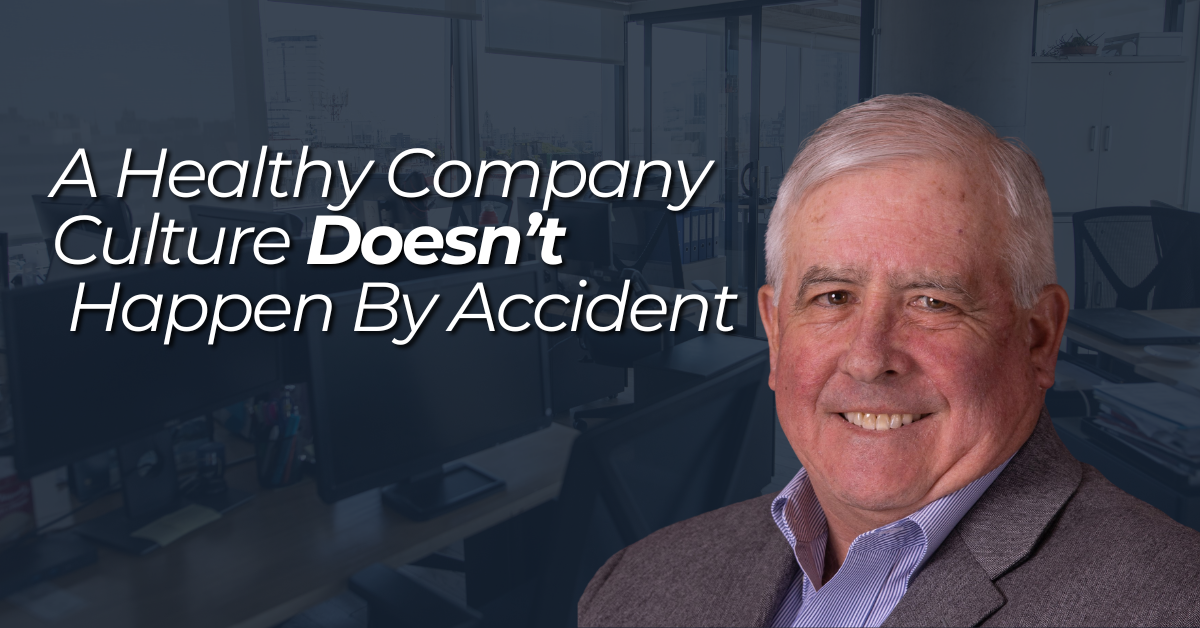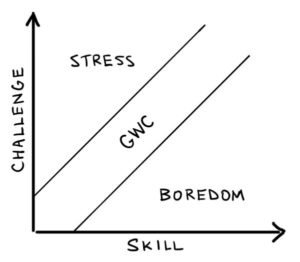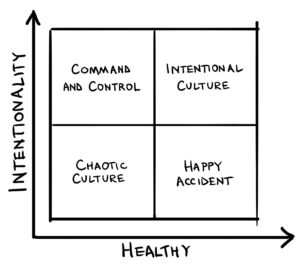
Out of the six key components of the EOS Model®, the People Component™ is where 82% of all organizational issues originate. The challenges of building a healthy company culture are no exception. Getting the People Component right (having the right people in the right seats) can be difficult, and that’s why I’m a huge fan of the recently released book in the Traction® Library, “People: Dare to Build an Intentional Culture.” In their book, authors Mark O’Donnell, Kelly Knight, and CJ DuBé give leaders the tools they need to master the People Component and intentionally create a thriving workplace culture.
One of things I really like about the book is that it talks about the GWC (gets it, wants it, has the capacity for it) Flow Channel and how each team member’s flow can impact company culture.
It provides a helpful visual to illustrate where a healthy balance of skill level and challenge on the job occurs for optimal GWC Flow. Insufficient skills and too much challenge can overwhelm an employee, while being highly skilled with too little challenge can result in boredom and lack of fulfillment. The sweet spot is somewhere in the middle where employees have the skills they need and adequate challenge in their work. That intersection is where not only will they be most self-confident, competent, and productive, but also where they will a positive influence on company culture.

The book also helps leaders understand how to assess the intentionality and health of their organization’s culture.

Another important point driven home by the book is the value of analyzing an organization’s culture to assess if it’s based on scarcity and fear or abundance and love.
Scarcity and Fear
A culture based on scarcity and fear is marked by abundant negativity and a reactive environment. People are pessimistic, and there’s a high level of competition. Everyone's looking out for themselves and focused on the short term. People have a great deal of anxiety and stress, self-doubt, and feelings of inadequacy. Some team members might exhibit a sense of entitlement within this culture.
Cultures based on scarcity and fear often have what's called a “suck it up” culture. Leaders expect their employees to just suck it up and do the work despite the challenges they’re facing. Naturally, entrepreneurship is not for the faint of heart. It requires toughness, resilience, and a willingness to weather setbacks, but leaders who expect their employees to just suck it up will find people will get burned out, fed up, and leave.
Abundance and Love
Conversely, heart-centered leadership will facilitate a culture of abundance and love. People are optimistic and collaborative. They willingly help each other out. They're proactive, content, and focused on the long term. Everyone feels confident and has a healthy sense self-worth. Rather than entitlement, there’s gratitude and generosity.
Leading with love is about the greater good. It's about authenticity and having genuine care and concern for people. The book shares some examples of ways leaders can demonstrate care for their team members:
O’Donnell, Knight, and DuBé also emphasize that creating a stellar company culture requires a great leadership team.
Here are the signs that you have one:
When you have all of that at the leadership team level, it lays the foundation for an intentional and healthy culture.
My takeaways here are just a small sampling of the mission-critical insight you’ll find in “People.” Truly, it’s a must-read for all business leaders who are striving to build and maintain an intentional company culture.